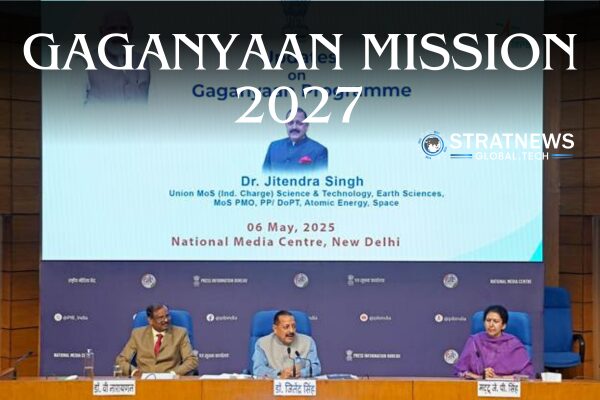Gaganyaan Mission Set for 2027: India Nears First Human Spaceflight
India’s first human space mission, Gaganyaan, has entered its final development phase. The landmark crewed flight is now scheduled to launch in the first quarter of 2027.
Key Milestones Already Achieved
Speaking at the National Media Centre, Union Minister Dr Jitendra Singh shared key updates on the mission. He noted the successful completion of the Test Vehicle Abort Mission (TV-D1) earlier this year. This marked a major step towards India’s goal of human spaceflight. The next abort test, TV-D2, is planned for 2025.
Following these, two uncrewed orbital missions are expected before the final crewed launch. These will use the Indian-made LVM3 rocket to send Indian astronauts into orbit from Indian soil.
Dr Singh emphasised that the mission is more than a technological feat. It highlights India’s rise as a global space power built on indigenous innovation and cost efficiency. Prime Minister Narendra Modi has also set bold targets—India aims to set up the Bharatiya Antariksha Station by 2035 and send an astronaut to the Moon by 2040.
Gaganyaan Astronaut Training in Full Swing
The astronaut training programme is progressing smoothly. Four Indian Air Force pilots, selected as astronaut-designates, have completed training in Russia. They are now undergoing mission-specific preparation in India.
Their physical and psychological readiness is being evaluated at India’s astronaut training facility. Simulated missions and sea recovery trials have also been completed with support from the Indian Navy. More such recovery drills are scheduled soon.
Key systems for the mission—including the crew module, service module, and crew escape system—are currently in final testing and integration.
Cost-Efficient Progress with Strong Industry Support
Dr Singh highlighted that Gaganyaan remains highly cost-effective. Compared to similar missions by other nations, India has kept spending low. Yet, the returns in innovation and economic growth are already significant.
The programme has led to breakthroughs in robotics, electronics, materials, and even medicine. It has also boosted private-sector participation in India’s growing space economy. Reforms by the government have enabled start-ups and industries to play active roles in the mission.
ISRO Chairman Dr V. Narayanan echoed these views, saying Gaganyaan is not just ISRO’s mission, but India’s. He added that it is inspiring a new generation of scientists and engineers across the country.
With its human spaceflight set for 2027, India is set to join the elite club of nations capable of launching astronauts independently. Gaganyaan is both a scientific milestone and a symbol of India’s broader strategic ambitions in space.


